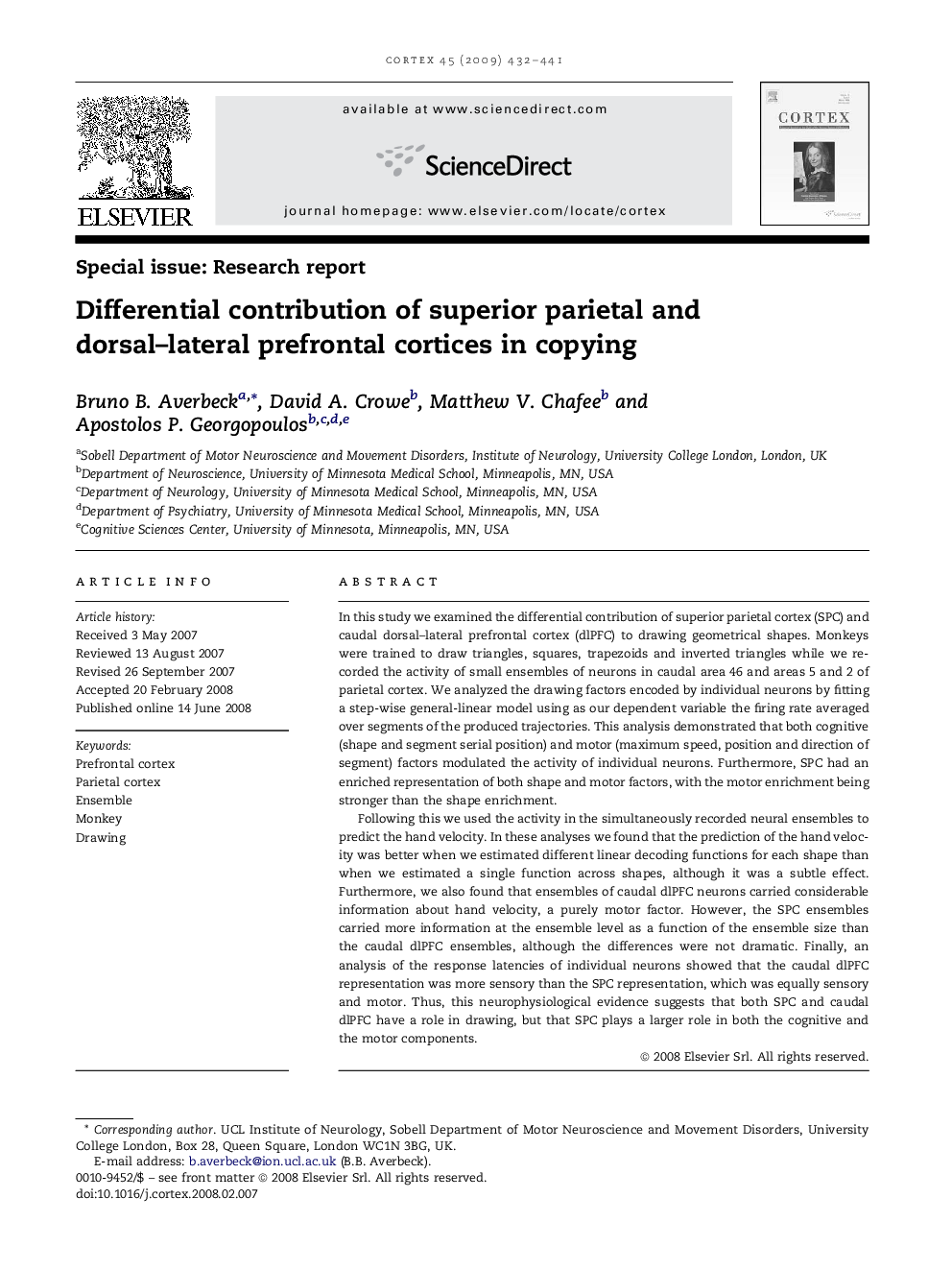| Article ID | Journal | Published Year | Pages | File Type |
|---|---|---|---|---|
| 10463389 | Cortex | 2009 | 10 Pages |
Abstract
Following this we used the activity in the simultaneously recorded neural ensembles to predict the hand velocity. In these analyses we found that the prediction of the hand velocity was better when we estimated different linear decoding functions for each shape than when we estimated a single function across shapes, although it was a subtle effect. Furthermore, we also found that ensembles of caudal dlPFC neurons carried considerable information about hand velocity, a purely motor factor. However, the SPC ensembles carried more information at the ensemble level as a function of the ensemble size than the caudal dlPFC ensembles, although the differences were not dramatic. Finally, an analysis of the response latencies of individual neurons showed that the caudal dlPFC representation was more sensory than the SPC representation, which was equally sensory and motor. Thus, this neurophysiological evidence suggests that both SPC and caudal dlPFC have a role in drawing, but that SPC plays a larger role in both the cognitive and the motor components.
Related Topics
Life Sciences
Neuroscience
Behavioral Neuroscience
Authors
Bruno B. Averbeck, David A. Crowe, Matthew V. Chafee, Apostolos P. Georgopoulos,
